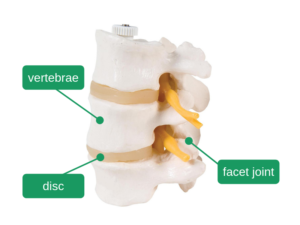
 It may not be as bad as you think
It may not be as bad as you think
By Megan Thomas, Senior Physiotherapist
When it comes to community beliefs about low back pain (LBP)
50% believe pain in the back means that the back is damaged
almost 90% believe that ignoring pain can damage the back and
70% believe there is ongoing weakness in the back following an episode of LBP (Darlow et al 2000)
Despite these popular beliefs, the spine is a strong structure and serious underlying structural causes are rarely the cause of LBP. Furthermore, the association between MRI findings of disc degeneration, disc bulges and LBP disability are weak (Deyo 2002).
So what can be causing the pain if it’s not that serious?
Often we can simply strain muscles and ligaments in our spine just like we can in any other part of our body. This causes inflammation, reduced joint movement and sends muscles into spasm. When it’s our ankle we have trouble walking and when this happens in the spine we often can’t move very well in any direction without limitation and/or pain which justifiably seems quite scary.
 What can I do when my back is like this?
What can I do when my back is like this?
Best practice guidance is “the more you move, the better you are” – with relatively, this does not mean go for an hour walk – it means trying not to spend more than 20 minutes in any one position, whether its sitting, standing, lying or walking. Get your back assessed by a physio and educate yourself on what is happening in your spine.
How does your back work
| Your back is a complex system of interlocking components |
| Vertebrae are the bones that make up the spinal column |
| Discs separate the vertebrae and act as shock absorbers |
| Facet joints between the vertebrae guide spinal movement |
| Ligaments hold the vertebrae together |
| Muscles are attached to the bones and control and produce movement |
What can be done to alleviate low back pain
Almost all Australian GPs refer patients with low back pain to Physiotherapists in preference to other health practitioners
As a musculoskeletal (muscle + bone) physiotherapist, we are experienced in the assessment, diagnosis and treatment of low back pain and ensuring our patients understand their condition is vital is one of the first steps we take.
- What is the pain?
- What caused the pain?
- What might be the consequences of the pain?
- How can I control the pain?
- How long will the pain last?
 Depending on the cause and the type of pain, physiotherapists treat back pain in a variety of ways
Depending on the cause and the type of pain, physiotherapists treat back pain in a variety of ways
- advice and early activity, ie get moving as early as you can
- mobilisation and manipulative physiotherapy
- McKenzie therapy
- specific stabilisation exercises
- general exercises and stretches
- ergonomic advice
- postural advice
- Clinical Physiotherapy exercise classes
Book an appointment to be assessed by one of our physiotherapists and get your low back pain under control.




















